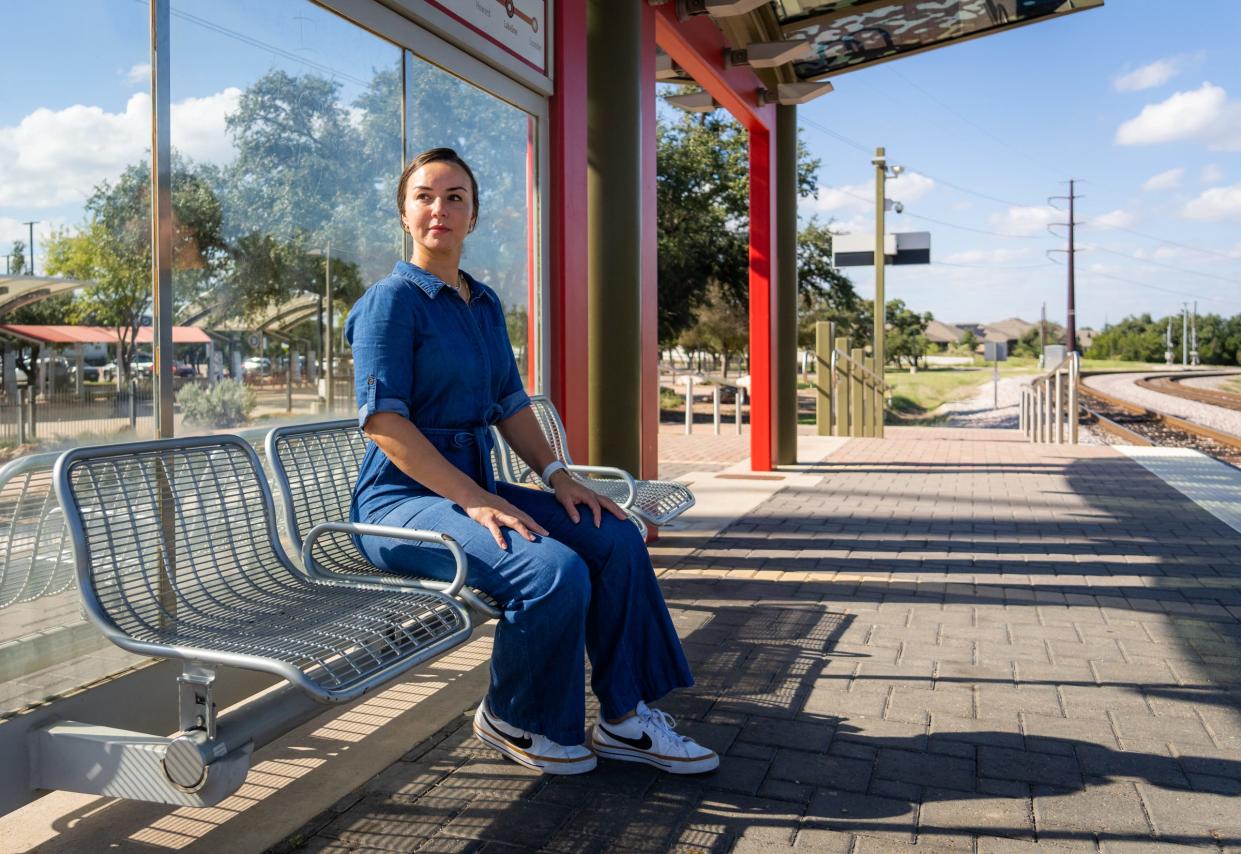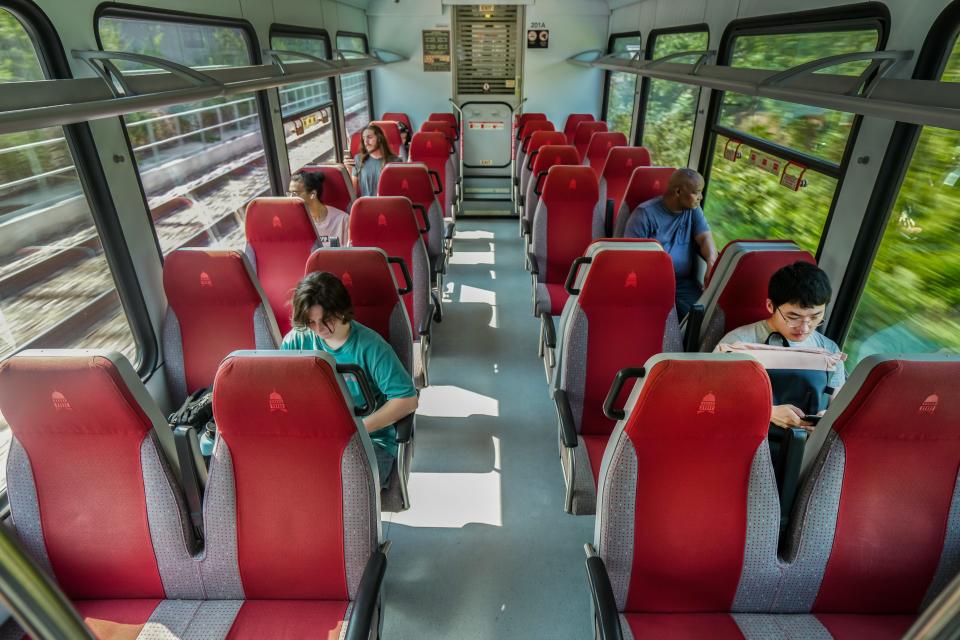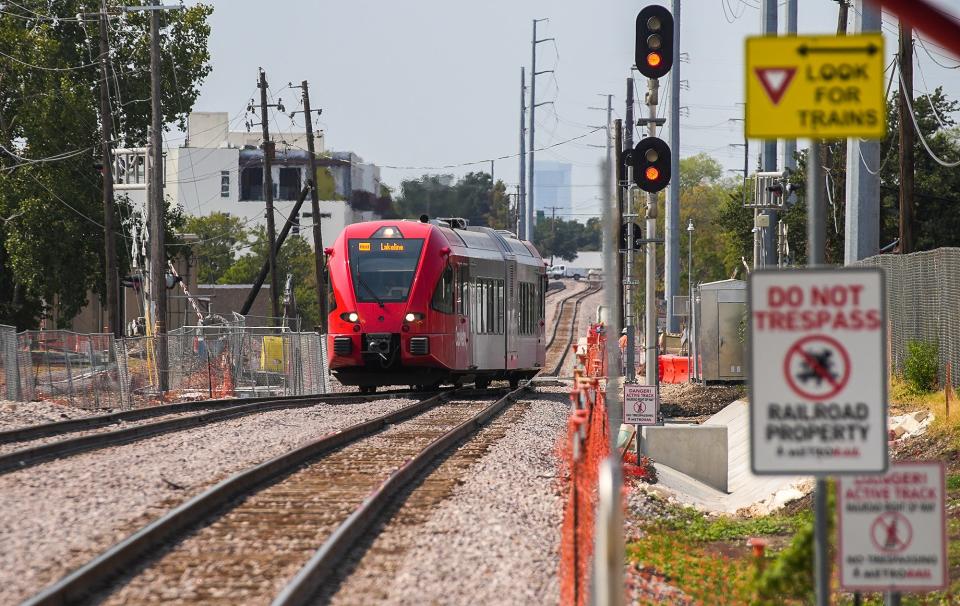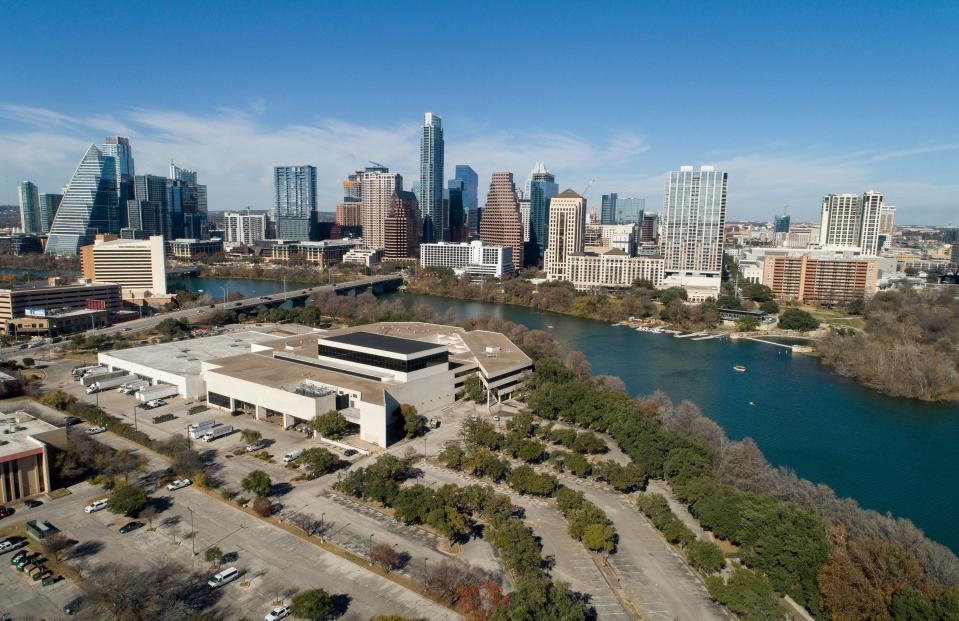What will Austin's transit plans look like in next decade? Here's what some are expecting.

Lulee Guerrero wanted to take her life back.
Hard times had stolen her independence just after she graduated from Round Rock High School in 2000, as she had married her high school sweetheart a short time before. Money was always tight. Holding a job was a tall order. Taking care of her young children — she was nine months pregnant with one of them when she walked the stage to get her diploma — was a challenge.
The issues compounded when the young family was evicted and became homeless, kicking off years of sleeping on relatives' couches. The hardships wore down the marriage, and the couple eventually separated, she said.
Guerrero, now with three kids, moved into Texas Baptist Children’s Home in Round Rock. But she had a plan: an advanced job in the medical field would give her back control, she hoped.
She put that plan in motion, taking prerequisite classes at Austin Community College. In 2017, she moved into an affordable housing complex in North Austin. The complex's proximity to Lakeline Station — a public transit hub where Capital Metro's Red Line commuter rail stops six days a week — was a major draw.
"Public transit was a must," Guerrero, 41, recently told the American-Statesman. The complex, called Lakeline Station Apartments, is run by the nonprofit Foundation Communities, with which Guerrero was put in contact during her time at the Baptist Children's Home. "If I didn't have it, there was no other way for me to get to my clinicals or get to work."
Countless bus and train trips connected her to downtown Austin and got her to class, where she studied surgical technology. In 2017, an Austin-area hospital system hired her as a surgical technologist, a role putting her in charge of maintaining sterile instruments and providing supplies to operating surgeons.
"I came a long way," Guerrero said. "I had many steppingstones to help me succeed. ... Without them, I might have given up."
Austin leaders, particularly those involved with molding the city's development code and a planned multibillion-dollar expansion of the city's public transit map, hope for more outcomes like Guerrero's. A number of proposed changes, they say, would expand the availability of affordable housing, some within proximity of new transit lines, and drive down Austin's average cost of living at a time of significant growth for the city.
Some of the key elements, such as the building of Austin's light rail system and associated mixed-use developments, are slated to stretch into the 2030s. But other changes will be realized much sooner.
With those changes in mind, the American-Statesman explored how different the city could look as development booms and public transit continues to be added. Here's what some are expecting in the next decade, and beyond:
City plan outlines what development on new Project Connect transit lines could look like
Guerrero's success came in part because she was able to live in affordable housing within walking distance of a public transit hub — an oppotunity city leaders hope to offer to more Austin residents through the buildout of Project Connect, the multibillion-dollar effort to establish a new light rail system, additional high-frequency bus routes, improvements to the Austin area's existing commuter rail offerings and other transportation infrastructure improvements.
City officials developed an "equitable transit-oriented development" policy plan that outlines how to develop around new transit stations under Project Connect. The plan, in part, would offer additional incentives for developers should they build amenities to benefit the community, including affordable housing and commercial or nonprofit lease space.
Across the country, efforts like those in Austin have resulted in more walkable and amenity-rich stretches of development for communities alongside public transit routes, said John Renne, an urban and regional planning professor at Florida Atlantic University and author of "Transit Oriented Development: Making It Happen."
"Austin has got a really nice core around the music scene, the culture, the University (of Texas) and the Capitol," said Renne, who has made repeated visits to Austin to visit family. "But when you get out of that core, it becomes really congested, low-density sprawl that could look pretty much like anywhere else in the United States."
Through transit-oriented development, the population density in these areas is typically increased. Done correctly, with both public-sector and private-sector advocates for the effort, it can have a positive impact on a city's average housing costs, Renne said.

Challenges to implementation and outcomes for transit-oriented development can vary from stop to stop on public transit routes, Renne added.
Some developments already built on the MetroRail Red Line show what this idea could look like in practice, said Bill McCamley, the executive director of Transit Forward, an advocacy group set up to support Project Connect.
The Plaza Saltillo district in East Austin, for example, has hundreds of housing units, a Target, a Whole Foods grocery store, bars, retail stores and office space — all within a more walkable and bike-friendly area. However, critics have said the development did not include enough affordable housing, noting that the requirement for affordable housing was cut from 25% of the 800 units to 15%.
The policy plan would aim to support residents of all incomes and backgrounds, particularly those with lower incomes who would be more likely to use public transit, according to the City Council-approved plan.
McCamley said the addition of the word "equitable" to "transit-oriented development" forecasts how possible gentrification of an area will be weighed more heavily than before for transportation developments under Project Connect. The transit-oriented development framework would be implemented on the almost 10 miles of new light rail and additional high-frequency bus routes.
"This is a lens future development will be looked at through," McCamley said. "The idea is to address a very clear, very quickly developing housing affordability crisis in Austin while keeping folks who currently rely on the bus or rail there."

The plan could lead to renewed interest from residents and city officials in developing parks and additional amenities in these areas, including public art installations, plazas and open spaces, Renne said.
"When you make an investment in a light rail system, it gives an opportunity for the planners in that community and the major stakeholders and developers to come together and say, 'OK, how can we make this place special and unique?’ ” Renne said.
The initial buildout of Austin's light rail system will have 15 stations, starting at 38th Street, traveling down Guadalupe Street and turning on Third Street before crossing Lady Bird Lake at Trinity Street. Once over the lake, the lines will split, one continuing down South Congress Avenue to Oltorf Street and another running east on Riverside Drive to Yellow Jacket Lane. The plan would also apply to Project Connect's new high-frequency bus routes.
Massive changes in housing, transportation, coming to parts of Austin
South First Street, South Congress, Lamar Boulevard, Airport Boulevard, East Seventh Street and Burnet Road are all on CapMetro's high-frequency bus lines, said Greg Anderson of Austin Habitat for Humanity and the Planning Commission.
“If you look at all those roads that have big parking lots, really outdated strip malls, there's just a strong desire for more housing,” Anderson said. “A lot of our outdated rules have limited what can be built on Congress, a lot of those corridors for years.”
Perhaps the most desirable plot for redevelopment? The former American-Statesman building, positioned along Lady Bird Lake off South Congress.
The redevelopment of the Statesman building could be one of the biggest changes seen in the South-Central Waterfront area. After several years of negotiating, in December 2022 the City Council agreed to a zoning change that will allow developers to move ahead with a massive mixed-use development.

The initial plans called for up to 3.5 million square feet of new development on the site, potentially in multiple high-rise buildings. The plans include condos, apartments, offices, a hotel, retail and restaurants.
Other developments of mid- and high-rise buildings are being planned along South Congress and other high-frequency transit lines.
A few blocks south of the SoCo retail, restaurant and live music district, Intracorp, a real estate development firm, plans to construct a seven-story building that would have about 280 luxury condominiums and residential units, plus 15,000 to 18,000 square feet of retail and restaurant space, according to the company's website. Plans also call for five stand-alone townhomes on Nickerson Street.
Another developer plans to transform 43 acres in South Austin with apartments, retail and office space, and a park along the proposed route for CapMetro’s Orange Line rail service at South Congress and West Dittmar Road.
Terry Mitchell with Momark Development said that simply expanding roads will never fix transportation mobility issues in areas like these. Having a comprehensive transit system, however, allows people and employers to plan their lives around transit centers.
“Employers can begin to plan locating around those centers and flushing those centers, and all of a sudden, it can begin to make an impact and people can then begin to use transit at a much great capacity,” Mitchell said.
Mitchell emphasized that having employers locate around the transit lines is crucial to the success of transit-oriented development.
“Your business has to be located at one of the other 10 places or you got to find a secondary means of transportation,” Mitchell said.
This article originally appeared on Austin American-Statesman: How Austin's public transit is changing the development game in city

